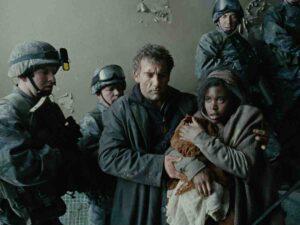A subgenre of science fiction and disaster films, end of the world movies depict natural disasters, nuclear wars, pandemics, asteroid impacts, or other catastrophic events that threaten the survival of humanity. They often feature a large-scale disaster or event and include elements of survivalism as the characters try to find ways to exist and rebuild society. They exhibit the bravery and resilience of the human spirit in the face of extreme adversity.
The end of the world movie genre has been popular for many years, with classic examples dating back to the 1950s and 1960s. Dig deeper into the history of cinema and you’ll find apocalypse movies being made since the dawn of narrative cinema. In 1916, Danish filmmaker August Blom made The End of the World. It explores social unrest as the news of a possible comet collision with Earth spreads. The End of the World was a box-office hit of its time, demonstrating moviegoers’ persistent interest in the apocalypse theme.
However, the golden age of the end of the world or apocalypse cinema began in the 1950s during the Cold War arms race and space race between the U.S. and the Soviet Union. Later, in 1968 George A. Romero’s low-budget horror Night of the Living Dead established the many tropes of modern apocalypse narratives. From George Miller and James Cameron to Michael Bay and Roland Emmerich, narratives of impending apocalypse drove millions of audiences to theaters, seeking hope in the bleakest of scenarios.
So here’s a look at the 25 best ‘end of the world’ movies. The list doesn’t solely focus on blockbuster disaster narratives. It also includes films that realistically reflect the anxieties of the nuclear holocaust and climate-change era:
The Best End of the World Movies
25. War of the Worlds (2005)

Steven Spielberg’s underappreciated apocalypse narrative is based on the classic H.G. Wells novel of the same name. Though the novel was written in 1897, Spielberg updates the premise to reflect the fear of the 9/11 attacks. Tom Cruise plays Ray, a divorced working-class father from New Jersey who has his two kids Rachel (Dakota Fanning) and Robbie(Justin Chatwin) visit him over the weekend. Soon, the family becomes a first-hand witness to the devastation caused by extraterrestrial invaders.
Amid the destruction and chaos, the dysfunctional family tries to reconcile and survive. Spielberg’s previous movies, such as Close Encounters of Third Kind (1977) and E.T. (1982), gave us friendly aliens. But, in War of the Worlds, we see the terror of an alien invasion destroying humanity. Nevertheless, the film ends on a hopeful note, suggesting that even catastrophic events cannot wipe out humanity from the universe.
Where to watch: Prime Video, Apple TV
24. 28 Days Later (2002)

Danny Boyle’s 28 Days Later was often credited as the film that reinvented the zombie apocalypse movies. Released a year after 9/11, the eerie portrayal of societal breakdown was acclaimed by Western critics and audiences. Boyle’s use of digital technology and handheld camerawork created a grimy tone and a sense of immediacy. The film opens with a man waking up from a coma at a dilapidated London hospital. Jim (Cillian Murphy) doesn’t yet know that while he was asleep, the world was annihilated by a virus.
After surviving the shocking assault of the infected, Jim teams up with other survivors in order to find a safe haven. But their odyssey pushes them to confront several horrors. In fact, fellow human beings seem more intimidating than the mindless horde of infected. Jim wandering around an empty London is one of the many iconic moments in the film.
Where to watch: Apple TV
23. Contagion (2011)

While many end-of-the-world/apocalypse movies exaggerate events for entertainment, Steven Soderbergh’s Contagion is the most prescient portrayal of a pandemic in film. The film received praise for its scientific accuracy, especially after the emergence of the Covid-19 virus. Many were amazed that the film’s depiction of virus transformation, as well as the government’s reaction to curb the infection, mirrored the dreadful real-life scenario we witnessed in 2020.
Contagion follows a diverse group of individuals who are impacted by the viral plague. Some, such as the characters played by Matt Damon, are ordinary people who face devastating consequences in their everyday lives due to the pandemic. Other characters, like those played by Kate Winslet and Marion Cotillard, put themselves in harm’s way to save humanity from the deadly plague. In summary, Soderbergh’s film effectively showcases the ripple effects of a viral infection in a globalized world.
Where to watch: Prime Video
22. Take Shelter (2011)
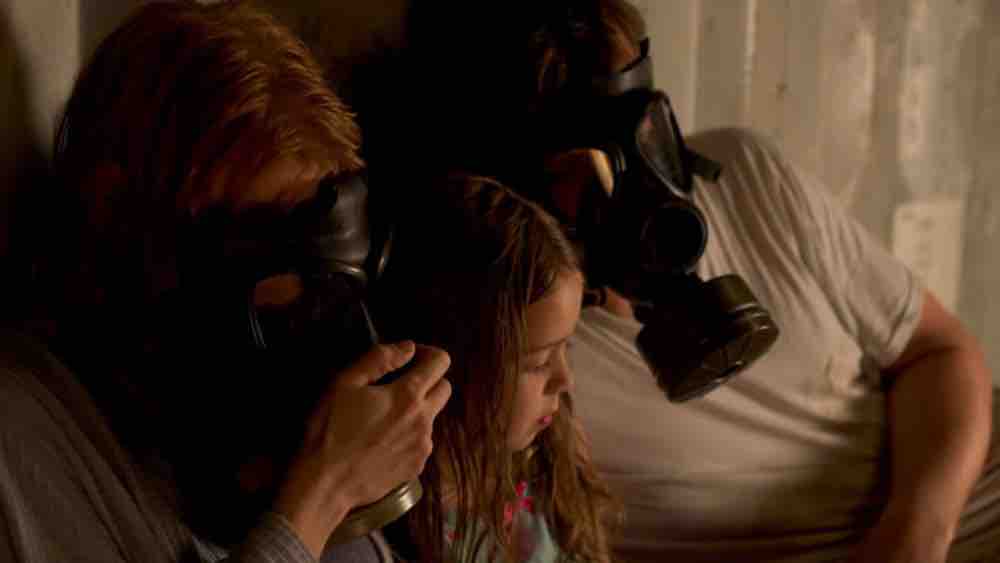
Jeff Nichols’ haunting family drama revolves around Curtis (Michael Shannon), a working-class guy living happily with his wife Samantha (Jessica Chastain) and daughter Hannah in a quiet Ohio town. But his normal existence is overturned when he has vivid dreams about the end of the world. Convinced by the apocalyptic visions of a storm, Curtis starts building an underground shelter in his backyard. Curtis’ preoccupation unravels the relationship between his family and community.
The storm does strike their small community. However, it isn’t as bad as he’d feared. Jeff Nichols raises several questions about our fear and paranoia regarding end times: Is Curtis a prophet? Or does he need to be institutionalized? But Nichols leaves us with an ambiguous final shot which only raises more questions. Take Shelter largely works due to the heartbreaking performance of Michael Shannon, who subtly realizes Curtis’ internal emotional struggles.
Where to watch: Hulu
21. Miracle Mile (1988)

Steve De Jarnatt’s apocalyptic romance-thriller was made at the end of the decades-long Cold War between the American and Soviet Union. But the writer/director had been working on the idea for nearly a decade. It revolves around a young man in L.A. who accidentally learns of an impending nuclear war. He is the only one who knows that the nuclear missiles are on their way, and will hit the American shores in just over an hour. What follows is a riveting suspense thriller as the protagonist struggles with his plan of action.
He’s also suspicious whether he’s really heard the information or is it just a prank. Miracle Mile opens like a rom-com as central character Harry, a jazz musician, misses a date with a diner waitress. Soon, it turns into a brilliant race-against-time narrative. Unfortunately, the film failed at the box office and was even underappreciated in cinephile circles.
Where to watch: Apple TV
20. Testament (1983)

Nuclear war was strongly feared in the early 1980s. Peter Watkins’ faux documentary War Game (1966) showed how terrible a nuclear attack could be. While movies like Fail-Safe (1964) and Dr. Strangelove (1964) showed the tense political situation of the time, 80s movies vividly imagined what might happen post a nuclear war. Lynne Littman’s Testament tells one such haunting story of a suburban family living in the San Francisco Bay Area. Nuclear weapons would soon destroy most of the major American cities.
Mother Carol Weatherly (Jane Alexander) and her three young children are cut off from civilization. The father doesn’t return home from work. Testament doesn’t have the kind of narrative conflict we usually expect in the end of the world movies. In fact, most of the violence and looting happen off-screen. It’s rather a heartbreaking portrait of surviving in uncertain, bleak times. Jane Alexander’s phenomenal performance won her a Golden Globe and an Oscar nom.
Where to watch: Archive.org
19. The Road (2009)

John Hillcoat’s The Road is loosely based on Cormac McCarthy’s novel of the same name. Released in the same year as Roland Emmerich’s blockbuster 2012, The Road didn’t have grand visual effects or a world-spanning narrative. Yet Hillcoat’s vividly disturbing images showcased how humans struggle to survive when the facade of civilization disappears. The primary narrative of The Road follows a man (Viggo Mortensen) and his young son (Kodi Smit-McPhee) surviving in a hostile environment while also upholding their moral principles.
The reason for the apocalypse is kept ambiguous. The narrative simply uses a depressing atmosphere to create an unsettling mood, rather than resorting to zombies or alien creatures. Writer/director John Hillcoat largely used the post-Katrina, New Orleans for this end of the world story. The computer-generated imagery was employed in small portions to enhance the bleakness of the surroundings. The film features brief cameos from Robert Duvall and Guy Pearce.
Where to watch: Tubi, Apple TV
18. A Quiet Place (2018)

Alien monsters wreaking havoc on human society is a familiar science fiction genre narrative. But John Krasinski’s suspenseful thriller A Quiet Place brings a great sense of realism to the proceedings. The silent apocalypse in the film is caused by armored, fast-moving, Praying Mantis-like alien creatures. Their origins remain a mystery. The creatures track the human population through their super-hearing skills and have almost brought human society to a standstill.
The survivors, including the Abbott Family, eke out a meager existence in silence. They share tender moments, despite the loss and sense of looming fear. Of course, love, determination, and resilience endure even when the world is coming to an end. The tense prologue brilliantly sets up the dangers awaiting the Abbots in the alien-infested world. A Quiet Place derived its horror elements from classic Hitchcock stories and Steven Spielberg’s Jaws. The big set pieces in the narrative are not only imaginative, but also emotionally engaging.
Where to watch: Netflix, Prime Video
17. Melancholia (2011)

Like Andrei Tarkovsky’s The Sacrifice, Von Trier’s Melancholia presents an apocalyptic premise but stays from the conventions of the genre. A rogue gas giant planet named Melancholia is about to collide with Earth. But the narrative doesn’t follow scientists and military personnel, who race against time to avert the catastrophe. Von Trier’s film simply revolves around two sisters, Justine (Kirsten Dunst) and Claire (Charlotte Gainsbourg). They hail from a dysfunctional family and are polar opposites.
Despite the impending doom, the entire family gathers to celebrate Justine’s wedding party. The party is planned at Claire’s vast mansion. The dance of death between two planets unfolds in the background. But in the foreground, we witness the distressing inner conflicts of the humans as they process the apocalypse. Melancholia was part of Von Trier’s unofficial Depression Trilogy, which explored the darker sides of the human condition. The eerily beautiful cinematography offers an incredible movie experience.
Where to watch: Hulu, HBO Max
16. 12 Monkeys (1995)
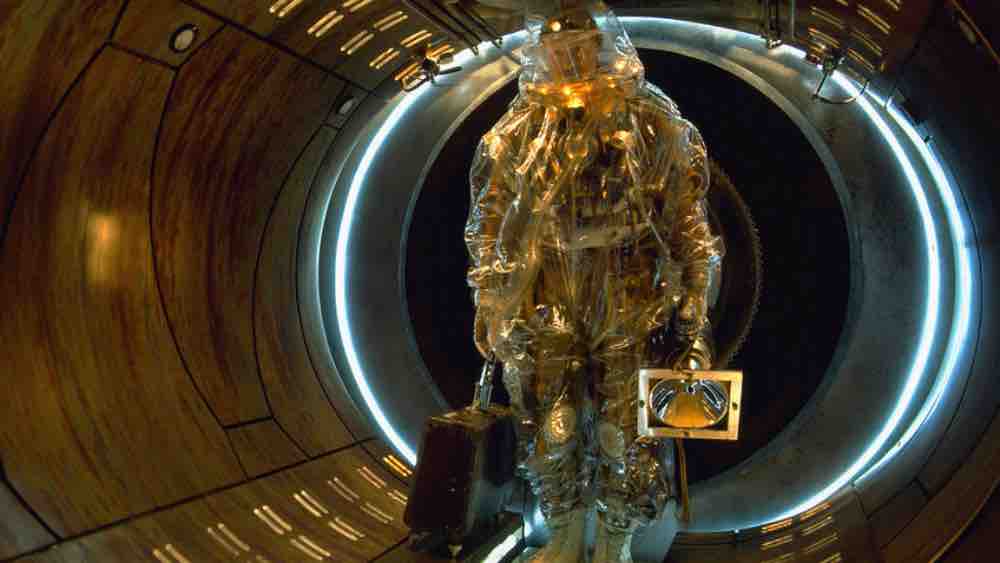
Terry Gilliam’s 12 Monkeys is inspired by Chris Marker’s short film La Jetee (1962). The film opens in a post-apocalyptic world, where a deadly plague has wiped out 99 percent of the human population. The surviving members of humanity are forced to live in underground communities. Decades after the plague, future scientists create a clunky time-traveling device. Their mission is to understand the origins of the virus that created the plague. The scientists force a prisoner named James Cole (Bruce Willis) to make this trip to the past.
However, the faulty time travel device and other complexities deeply unsettle Cole and make him question his sanity. 12 Monkeys is a distinct apocalypse movie with a brilliant time-travel twist. Parallels could be drawn between the film’s viral plague paranoia and the current pandemic. Gilliam’s film features outstanding performances from Bruce Willis and Brad Pitt (who was nominated for a Supporting Actor Oscar).
Where to watch: Amazon Prime Video
15. Train to Busan (2016)

Yeon Sang-ho’s Train to Busan was a critical and commercial success that boosted demand for Korean-based zombie apocalypse narratives. The story follows a father and his young daughter as a zombie outbreak sweeps the nation. Similar to George Romero’s seminal horror Night of the Living Dead (1968), Train to Busan limits its action to a narrow space. However, the zombie infestation unfolds at a riveting pace as it mostly takes place inside a high-speed train from Seoul to Busan. While racial oppression was an important subtext in Night, Train to Busan deals with the theme of the class divide.
The volatile and dreadful situation also tests the characters’ true nature as some succumb to selfish acts, while others rely on compassion and teamwork. The film’s ensemble cast includes the incredible performers Gong Yoo and Ma Dong-seok. A sequel, titled Peninsula, was released in 2020, but it received a tepid response.
Where to watch: Prime Video
14. Planet of the Apes (1968)

Franklin J Schaffner’s sci-fi fantasy is loosely based on French novelist Pierre Boulle’s novel of the same name. It follows a group of space voyagers who’ve spent a year in deep hibernation while their spaceship travels at near-light speed. Unfortunately, due to a malfunction, the astronauts crash land on an unknown planet that supports life. Due to time dilation, 2,600 years have passed since their departure from Earth in 1972.
The three surviving astronauts walk through the desolate wasteland and soon come across a society ruled by the apes. In this world, humans are primitive and have lost the power of speech. They are killed, enslaved, or used for scientific experiments. Planet of the Apes was one of the most interesting mainstream films to reflect the fear of nuclear holocaust. Moreover, it doesn’t offer any false hope or easy resolutions. The twist ending is, in fact, one of the most memorable in the history of cinema.
Where to watch: Apple TV
13. Invasion of the Body Snatchers (1956)

The two World Wars and the atomic bomb testing intensified the fear of mass extinction. Alongside these fears, America was also afraid of communist ideological invasion. The Cold War was at its peak in the 1950s and 1960s. And the movies from the time reflected the socio-political climate through sci-fi and horror narratives. Don Siegel’s Invasion of Body Snatchers offered a prototype for silent alien invasion/human extinction stories. It’s set in a small town in California and revolves around a doctor who notices that his patients are behaving strangely.
The family members of the patients confess that they have recurring dreams of imposters replacing their loved ones. Soon, the doctor realizes that there’s an explainable reason behind this fear. Furthermore, he discovers that an alien race is taking over human bodies. It’s a fascinating allegory of McCarthyism and the Red Scare. Philip Kaufman made an equally brilliant remake in 1978.
Where to watch: Plex
12. When the Wind Blows (1986)
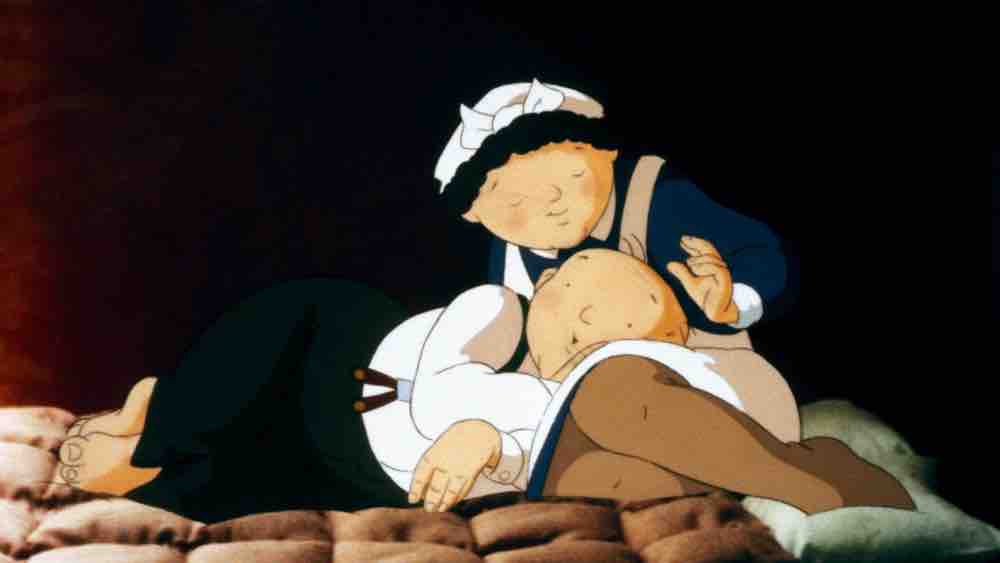
Jimmy Murakami’s heartbreaking British animated classic is based on Raymond Briggs’ 1982 graphic novel. The narrative is set in a bucolic village not far from London. It revolves around the elderly British couple Hilda and James Bloggs. The Cold War is about to escalate into a full-blown nuclear war. James returns home one day with government pamphlets about surviving the war. His naïve as well as understandable efforts to prepare themselves for the impending nuclear attack offer us a glimpse into an era’s fear and paranoia.
Little do they know that all preparations would be rendered futile in the face of a nuclear holocaust. In fact, that’s what the story is all about. It painstakingly takes us through the elderly couple’s suffering and deterioration as a bomb drops in London. It’s hard to hold back tears as the radiation sickness gradually dissolves the couple’s resilience.
Where to watch: Tubi
11. Mad Max Franchise (1979- )

George Miller’s Mad Max is one of the most wildly imaginative movie franchises ever made. It started as a small-budget Aussie exploitation thriller. The first film, made in 1979, followed the titular character journeying through the wastelands of a post-apocalyptic world to seek vengeance for the loss of his family. Max Rockatansky (played by Mel Gibson) is a police officer turned vigilante. The two sequels to the original Mad Max expand the universe and explore the many troubles in the anarchic futuristic society. The cause of the apocalypse is said to be nuclear fallout.
The big-budget Hollywood reboot starring Tom Hardy and Charlize Theron fascinatingly updated the premise with timely themes and riveting action sequences. Fury Road (2015) subtly showcased the terrors brought upon by mankind in an authoritarian, ecosystem-destroyed world. Two Mad Max movies are set to release soon: a prequel Furiosa, and a sequel Mad Max: Wasteland.
Where to watch: HBO Max
10. Dawn of the Dead (1978)
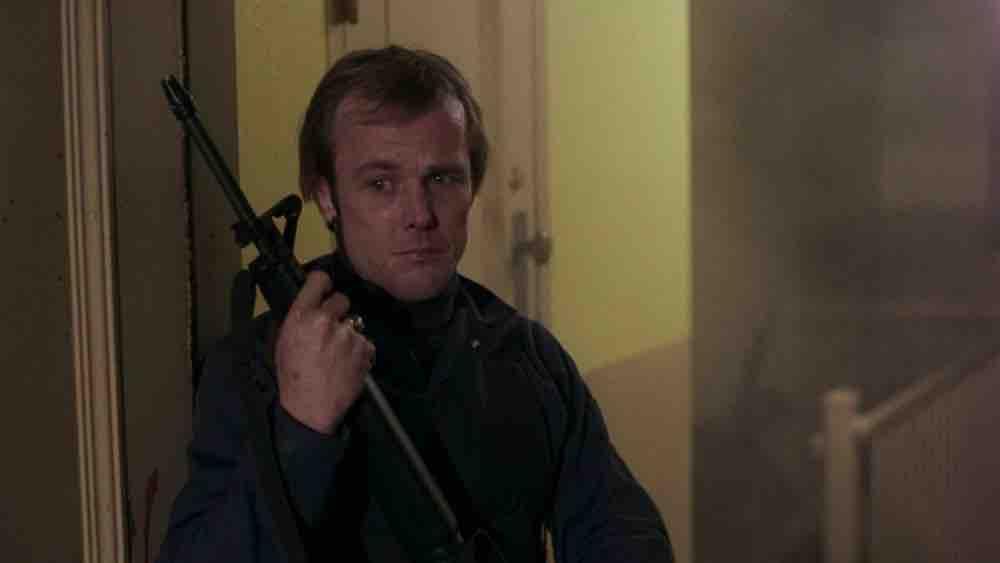
Romero’s zombie apocalyptic movies were especially known for their social commentary. While Night of the Living Dead offered a critique of race relations in 1960s America, Dawn of the Dead zeroes in on the mindless consumerist culture. The film opens with a news broadcast of human civilization crumbling worldwide. A group of disparate individuals seeks safety in an indoor mall. Since the place contains everything from food, and clothing to weapons, they think it’s the perfect place to spend the apocalypse. However, the undead, driven by some impulse, keep strolling in the mall’s corridors.
Apart from the satirical layers, Dawn of the Dead features a thrilling story, strengthened further by wacky visual and make-up effects. In the mall, we observe a microcosm of American society, indoctrinated into an economic and cultural system that has lost all its relevance after the world’s end. Zack Snyder remade the film in 2004, but with no meaningful subtext.
Where to watch: Apple TV
9. Shaun of the Dead (2004)

In Edgar Wright’s horror-comedy Shaun of the Dead, emotionally-stunted best friends Shaun (Simon Pegg) and Ed (Nick Frost) have a simple plan to face the apocalypse. They decide to visit and gather their loved ones, go to the pub for a nice cold pint, and wait for everything to blow over. Naturally, Shaun and Ed’s fun plan to encounter the zombie apocalypse has too many loopholes to work out. However, the buddies learn a few things about growing up, forgiveness, and the power of friendship.
The premise of Shaun of the Dead is deliberately silly. Only the ‘end of the world’ pushes our titular character to own up to his faults and make amends. The film celebrates as well as mocks the zombie apocalypse story tropes. Besides, Wright’s clever audio-visual tricks make it a fun watch. Wright and Pegg’s splendid screenplay delicately balances humor and poignancy.
Where to watch: Vudu, Apple TV
8. The Last Wave (1977)

The Last Wave was made by Australian filmmaker Peter Weir who later made iconic Hollywood movies Dead Poets Society and Truman Show. This strange and intense apocalypse doesn’t rely on set pieces or special effects to convey the impending sense of doom. Weir employs haunting imagery and draws from indigenous spiritual tales to create suspense. The film revolves around corporate tax lawyer David Burton, who lives in Sydney with his family. He accidentally represents a group of Aborigines accused of murder.
One of the alleged murderers, Chris Lee (David Gulpilil), is plagued with apocalyptic visions that signal the end of the world through a massive flood. In fact, the tribal rituals and belief in the violent hailstorm become central to the case. The Last Wave is an enigmatic drama that doesn’t conform to any genre conventions. Our contemporary climate concerns only lend the film’s subtext more weight.
Where to watch: Archive.org
7. Children of Men (2006)

Alfonso Cuaron’s Children of Men offers a unique take on world ending movies. The film is set in 2027 and depicts a world where no children have been born for almost two decades due to worldwide infertility. As a result, human civilization is gradually collapsing. While the infertility aspect differs from our world, there are eerie similarities between the two, as both are deteriorating due to economic crises, civil wars, terrorist bombings, and migrant crisis.
In such a hopeless world, Theo (Clive Owen), an ex-activist and a world-weary bureaucrat, makes a hopeful journey. He takes up the duty of safely transporting a migrant woman named Kee (Clare-Hope Ashitey), who is miraculously pregnant. The mission, though proves to be very dangerous, transforms Theo from being cynical to an altruistic individual. What’s so memorable and haunting about this speculative sci-fi is Alfonso Cuaron’s gritty and engrossing mise-en-scène.
Where to watch: Prime Video
6. Dead Man’s Letters (1986)

Russian filmmaker Konstantin Lopushansky’s highly ambitious nuclear holocaust film is a profound exploration of the human condition in a world filled with despair. What’s most striking about Dead Man’s Letters is the enchanting visualization of sepia-toned ugliness in the post-nuclear war human society. The story revolves around an elderly professor (Roland Bykov) who lives in a museum’s bunker with his wife and a few other survivors. The professor writes letters to his lost son Eric. In the letters, he reflects on humanity’s unconditional ability to love as well as their outsized ambition.
The narrative, however, isn’t restricted to the bunker. Our main character heads out to buy painkillers for his wife while keeping in mind the curfew. He also meets a group of deaf orphan children at the city’s orphanage. Director Lopushansky made three more post-apocalyptic films following Dead Man’s Letters. Visitor to a Museum (1989), Russian Symphony(1994), and Ugly Swans (2006).
Where to watch: YouTube
5. WALL-E (2008)
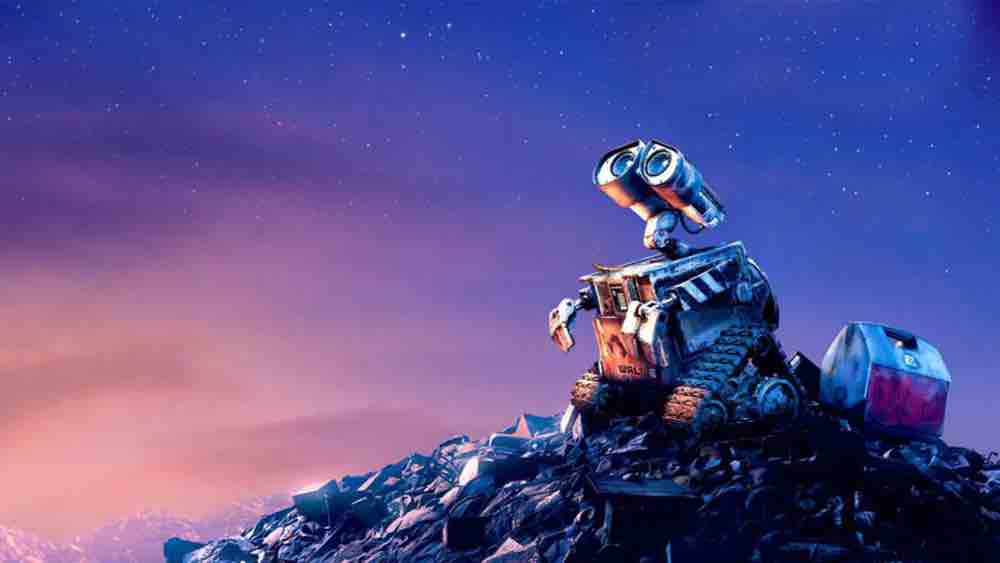
In Andrew Stanton’s Pixar animated masterpiece, environmental disasters caused by humans have led to the end of the world. The Earth is now empty of life, but full of skyscrapers of garbage. A little waste-collecting robot seems to be the only inhabitant of this apocalyptic landscape, accompanied by a cockroach who is his friend and pet.
One day, a sleek robot arrives from the Starship that our robot friend addresses as ‘EVE’. Her mission is to test whether humans can return to Earth. For centuries, humanity has been confined to a giant spaceship, waiting for the moment when Earth becomes sustainable for life. The discovery made by the two robots in the film determines humanity’s fate.
Despite its light-hearted and whimsical tone, Wall-E depicts a dystopian future with disturbing parallels to our present. The animation brilliantly portrays humanity’s increasing dependence on technology and detachment from their fellow human beings.
Where to watch: Disney Hotstar
4. Threads (1984)

Several realistic movies have depicted the effects of a nuclear holocaust. But nothing comes close to Mick Jackson’s deeply unsettling Threads. Of course, the made-for-TV docudrama was heavily influenced by Watkins’ faux documentary The War Game. At the same time, Barry Hines’ complex script offers both macro and micro perspectives on the aftermath of a war. Threads is set around the working-class community of Sheffield, England.
It unfolds against the backdrop of the Iran crisis, which escalates the threat of nuclear war between America and the Soviet Union. We follow several ordinary people who are ruthlessly pushed into a bleak scenario following the detonation of nuclear bombs around Britain. The film portrays the horrors of the circumstances in a visceral, matter-of-fact manner. It provides a close look at the slow breakdown of society once its infrastructure and chain of command are destroyed. The final third of the narrative is particularly bleak.
Where to watch: Archive.org
3. Night of the Living Dead (1968)
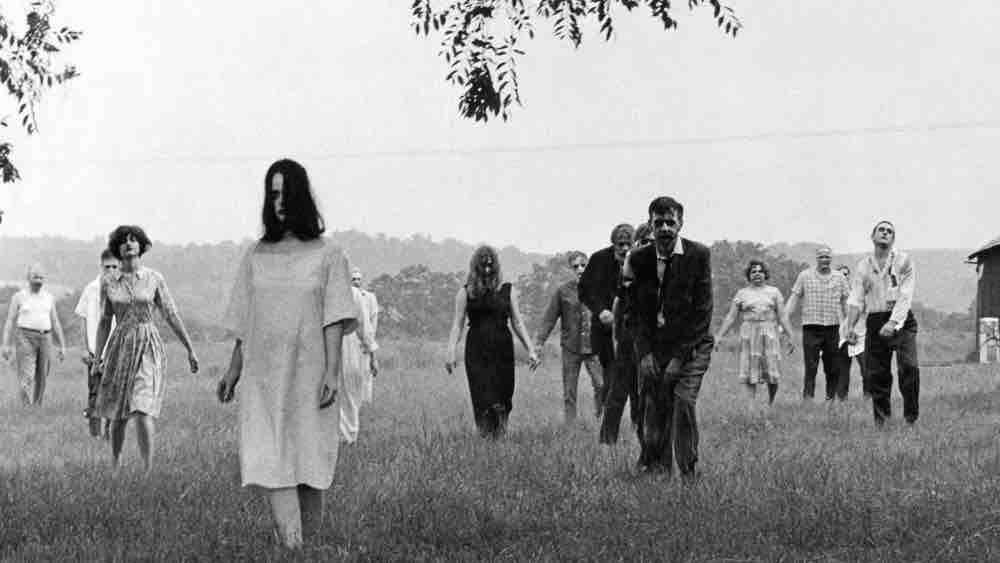
George A. Romero is widely recognized as the father of the modern zombie subgenre in film. The concept of zombies originally comes from Haitian folklore, which symbolizes slavery and the suffering of black people. However, earlier Hollywood films that portrayed zombies were often filled with racist undertones. Romero broke free from this strict racial discourse and instead portrayed zombies as beings robbed of agency and autonomy due to an infection. The only driving force behind these undead creatures is their insatiable hunger for human flesh.
Night of the Living Dead, an independent horror shot in stark black-and-white, brings together a group of different-minded individuals trying to survive an impending undead apocalypse. They barricade themselves in an old farmhouse as flesh-eating zombies prowl outside and try to get in. Romero’s film was made during the Civil Rights Movement era. It offers ample socio-political commentary. The ending is particularly shocking.
Where to watch: Plex
2. The Sacrifice (1986)

The final film from Russian auteur Andrei Tarkovsky profoundly captures the tragedy and beauty of the human condition*. The Sacrifice* was made amid the Cold War tensions. Set in an isolated farmhouse, the film tells the story of critic and former stage actor Alexander (Erland Josephson), who lives with his wife, stepdaughter, and little son. The family has gathered to celebrate Alexander’s birthday while the middle-aged man deeply reflects on his life’s accomplishments.
Soon, there are reports of impending nuclear war, and Third World War seems imminent. What follows is a complex philosophical journey as Alexander ponders over a way to undo the man-made disaster. The Sacrifice is a majestic work of art that doesn’t follow any of the cinematic apocalypse scenarios. Tarkovsky’s intention was to make a timeless parable on the themes of existentialism, faith, and self-sacrifice. He not only succeeds in his quest but also gives us a masterpiece.
Where to watch: YouTube, MUBI
1. Dr. Strangelove (1964)
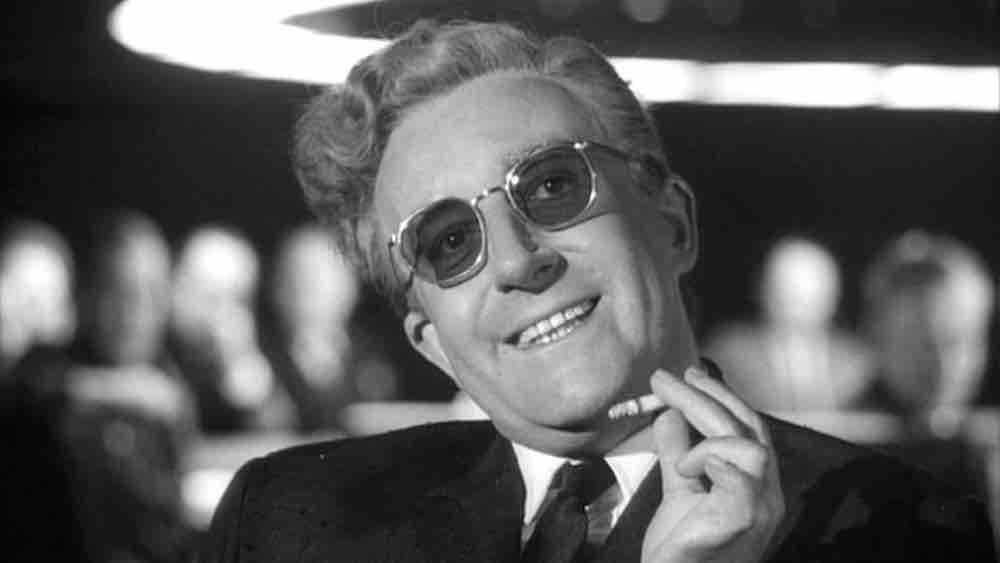
Now can you possibly make a hilarious satire out of war? Director Stanley Kubrick and actor Peter Sellers did it and masterly so. Inspired by Peter George’s 1958 novel Red Alert, Dr. Strangelove’s bizarre premise opens with US Air Force Brigadier’s insane action. General Jack D. Ripper (Sterling Hayden) seals off the Air Force base and deploys his B-52 Bombers to attack the Soviet Union. In the Pentagon War Room, the American President and the pompous Generals race against time to prevent a massive retaliatory attack from the Soviet Union.
The preposterous conflicts in the power corridors and wacky political deadlocks make the nuclear holocaust an inevitable conclusion. The legendary Peter Sellers plays three roles in the narrative, including a wheel-chair bound ex-Nazi scientist. Dr. Strangelove has one of the most memorable movie endings of all time as a Major is seen riding a nuclear bomb.
Where to watch: Vudu, Apple TV
Conclusion
There you go! These are our picks of the best end of the world/disaster movies. The list, of course, doesn’t include several entertaining guilty pleasures that treat impending apocalypse or post-apocalypse as a spectacle: Escape from New York (1981), The Day After Tomorrow (2004), 2012 (2009), I am Legend (2007), Armageddon (1998), World War Z (2013), etc. Or a few intriguing low-budget apocalyptic narratives like The Day After (1983), In the Mouth of Madness (1994), Seeking a Friend for the End of the World (2012), Pontypool (2008), and On the Beach (1959).
What are your favorite end of the world movies?

